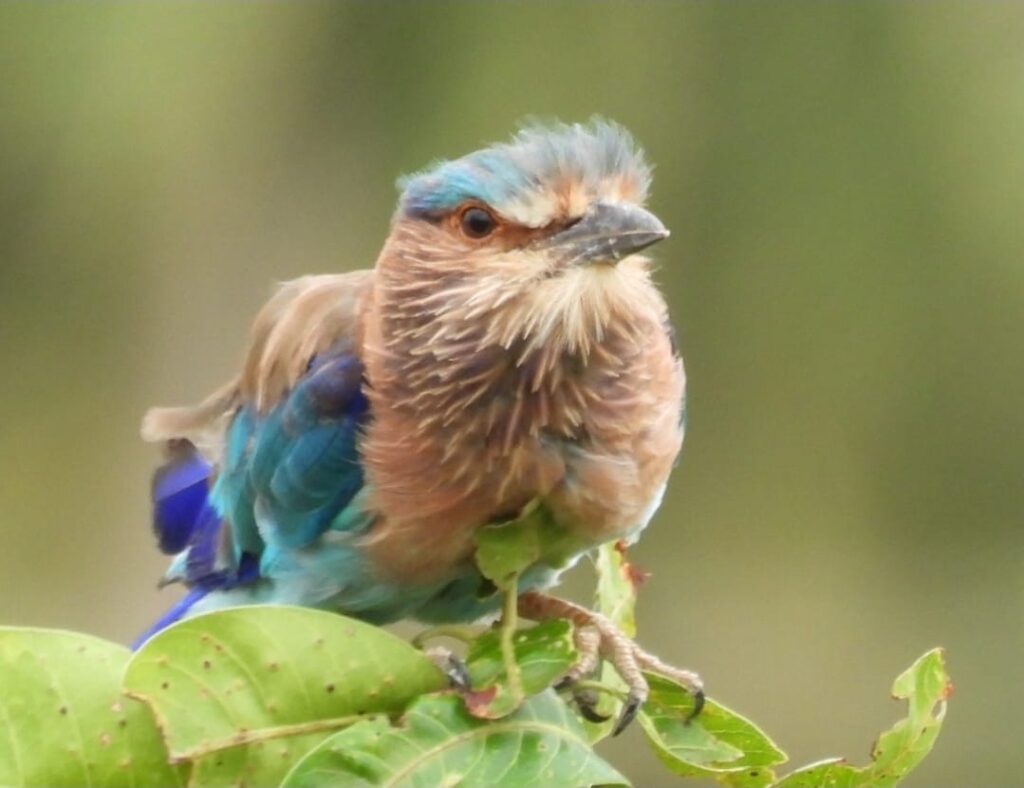
Meera Bhardwaj @ Eastern Ghats:
The iconic bird species – the Indian Roller has entered the IUCN’ Red List of Threatened Species. Although it is Karnataka’s state bird, no efforts have been made to conserve their “declining numbers” in the state.
Recently on October 10, 2025, the International Union for Conservation of Nature (IUCN) released its updated Red List and placed THREE BIRD species of India under the “Near Threatened” category and ONE BIRD species listed as Endangered.
This list of Near Threatened includes:
- Indian Roller,
- Indian Courser, and
- Rufous Tailed Lark.
However, conservation status of Long-Billed Grasshopper Warbler has worsened in India and has been listed as Endangered.

HABITAT CHANGE/LOSS
According to IUCN, the population of all the above four – Indian Roller, Indian Courser, Rufous Tailed Lark and Long-Billed Grasshopper Warbler has been declining for varied reasons.
And they include – the disappearance of open natural ecosystems like the deserts, semi-arid lands, grasslands, hilly scrublands, scrub forests, croplands and of course, the fallow lands. The reasons for IUCN assessment are – urbanization, expansion of linear structures, intensification of agriculture and spread of invasive species.
GREEN MINUTE LOOKS INTO ONE OF THE NEAR THREATENED SPECIES – INDIAN ROLLER
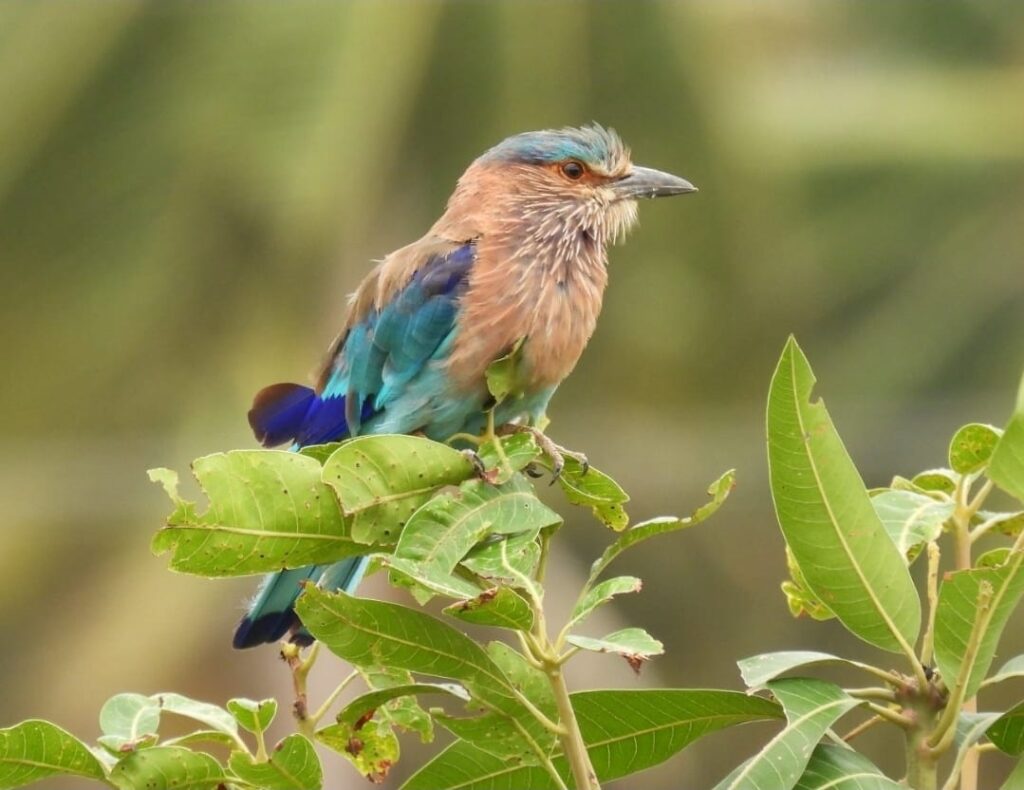
THREATENED INDIAN ROLLER
A Shcedule-II species under the Wildlife Protection Act, the Indian Roller Coracias benghalensis has most recently been assessed for The IUCN Red List of Threatened Species in 2025.
Coracias benghalensis was listed as Near Threatened under criteria A2bc+4bc on June 4th, 2025.
CULTURAL SIGNIFICANCE
The state bird of Karnataka and two other states – Odisha and Telangana in India, their common names are Neelakantha or Uruliga in Kannada which means blue throat. They can often be found on electric wires or cables or electric poles and sometimes, on road trees.
For the people of Karnataka and other states, this bird is considered a symbol of good fortune, prosperity, and victory. Its sighting is seen as an auspicious omen, and it is culturally linked to important events like Dasara and Lord Rama’s victory over Ravana. So, this makes it a significant symbol of faith and good luck.
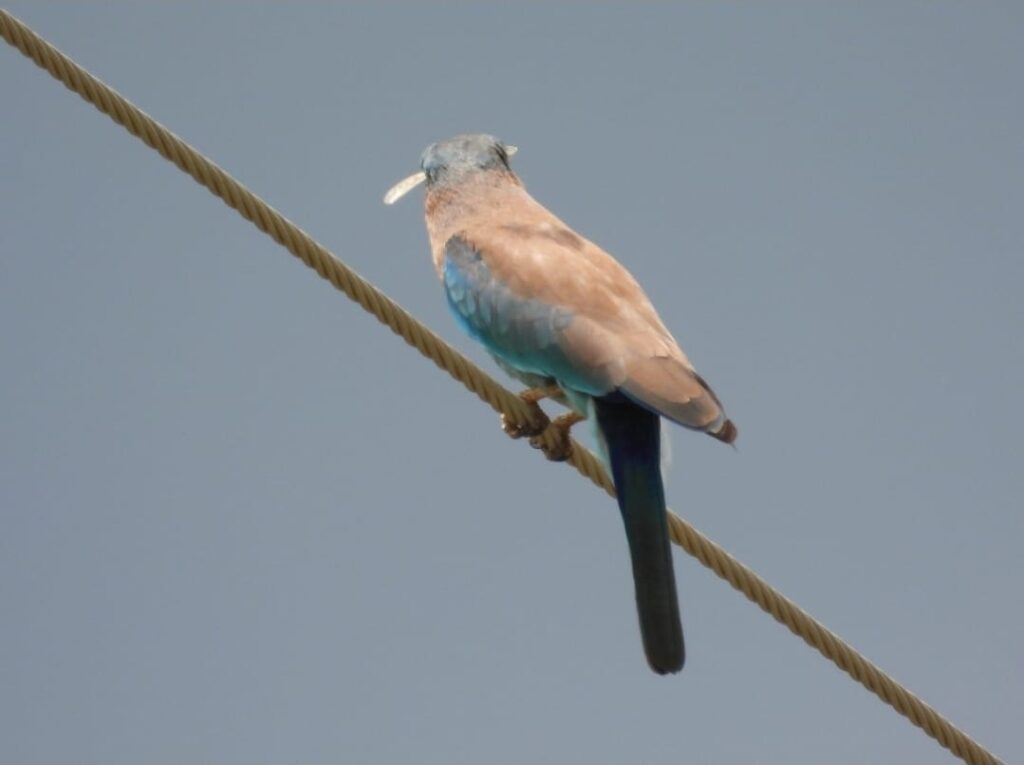
JUSTIFICATION FOR ITS RED LISTING
The Indian Roller species has a vast range which spans part of the Arabian Peninsula and most of the Indian Subcontinent. Its population size has not been estimated, but on account of descriptions of its abundance and it is a very large range and so, it is suspected to be large.
However, recent trend data (derived from citizen science data) have identified that it may be declining moderately rapidly at rates that approach the thresholds for listing as threatened. Accordingly, it is listed as Near Threatened.
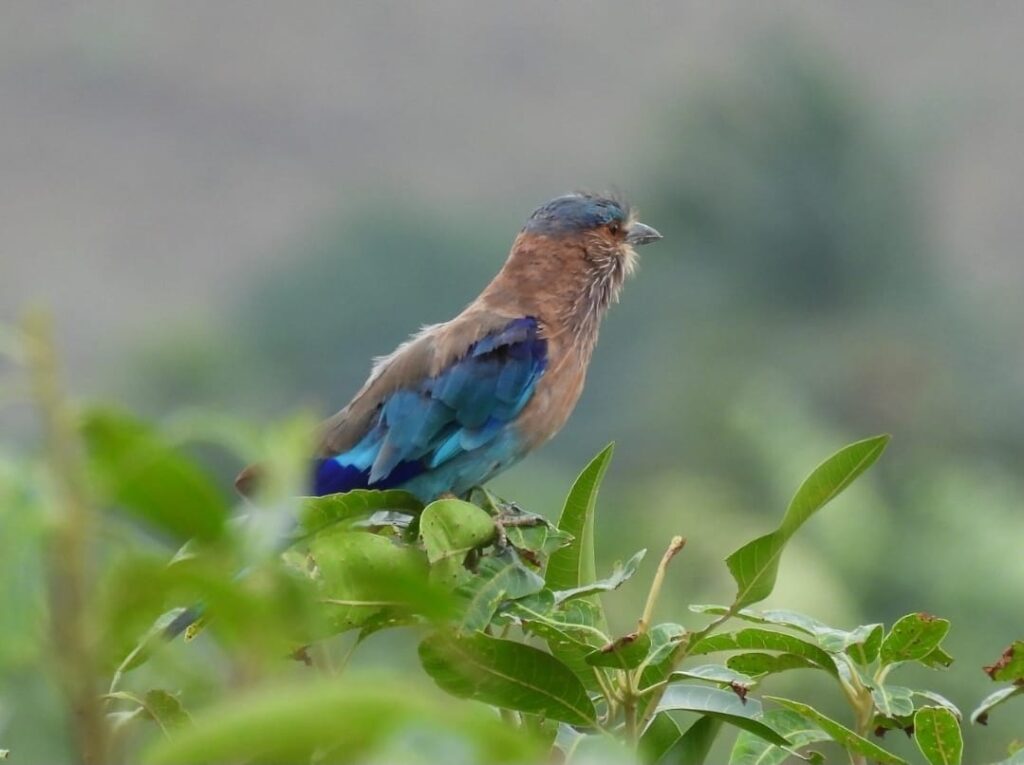
POPULATION ESTIMATION
There is an urgent need to more accurately quantify population trends from across its range and to identify (and address) threats that may be affecting the Indian Roller species. However, the majority of the global population lies in the Indian Subcontinent where widespread declines have been reported.
The population size of this species in India has not been quantified. The species remains locally common across large parts of India (Fry and Kirwan 2020, eBird 2025). The rapid rate of decline of 30 percent over three generations (2015-22) is a cause of great concern.
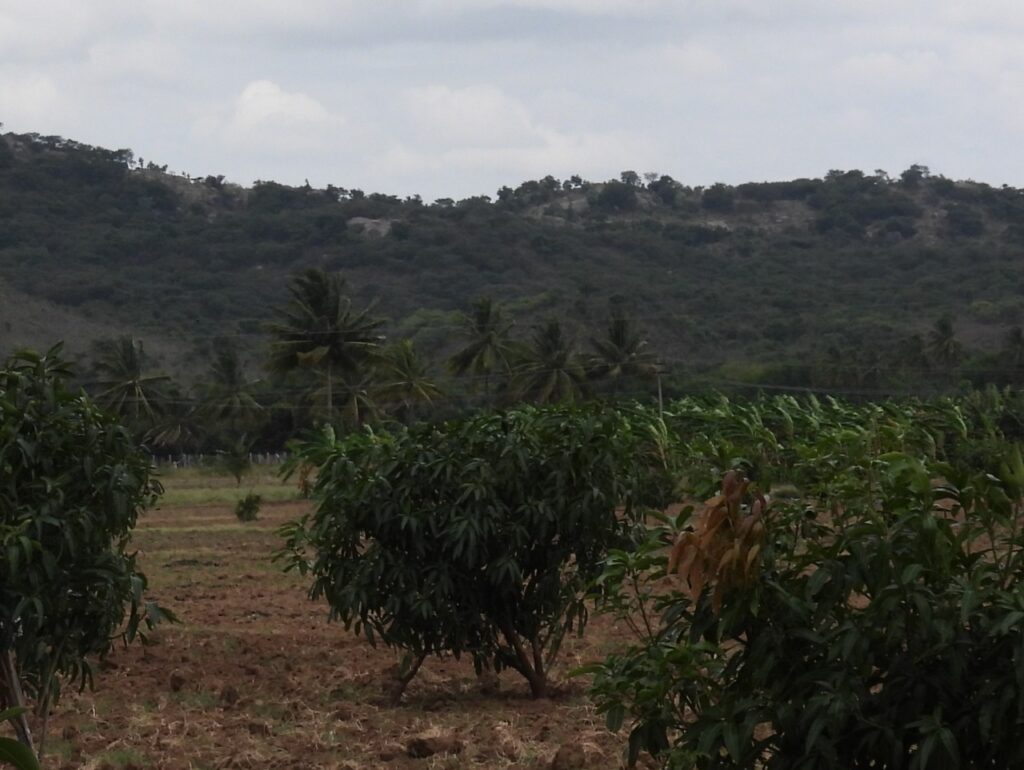
DECLINE IN KARNATAKA
In addition to quantitative data, there are anecdotal reports of declines in Telangana (S. Reddy in litt. 2025, Vinay Kumar N. in litt. 2025) and Karnataka (Vijayalakshmi in litt. 2025). Increased use of pesticide by farmers has been cited as a major reason for its decline.
The Indian Roller mostly uses dry open farmland, pastures, groves, grasslands and around villages. Throughout its range it is usually recorded below 1,500 m and with regular (if rare) occurrences up to 2,200 m.
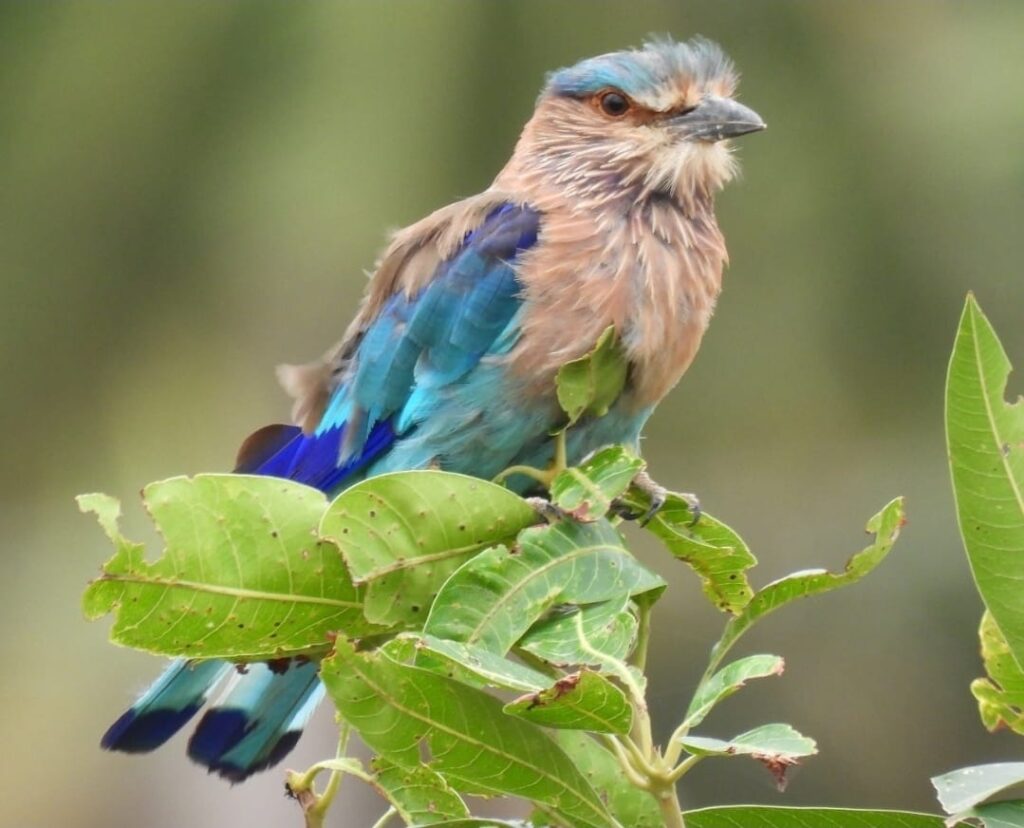
SPECIES DESCRIPTION
Known for its beautiful and colourful appearance, the Indian Roller has a sky-blue crown with its body colour being brown. However, the striking blue feathers on its wings gives it a distinctive appearance.
The blue feathers even on its tail is beautiful and is clearly visible when in flight. The name “roller” it derives is due to the aerial displays performed by the males during the breeding season to attract the females. In fact, the bright blue markings on its wings are very prominent during its flight.
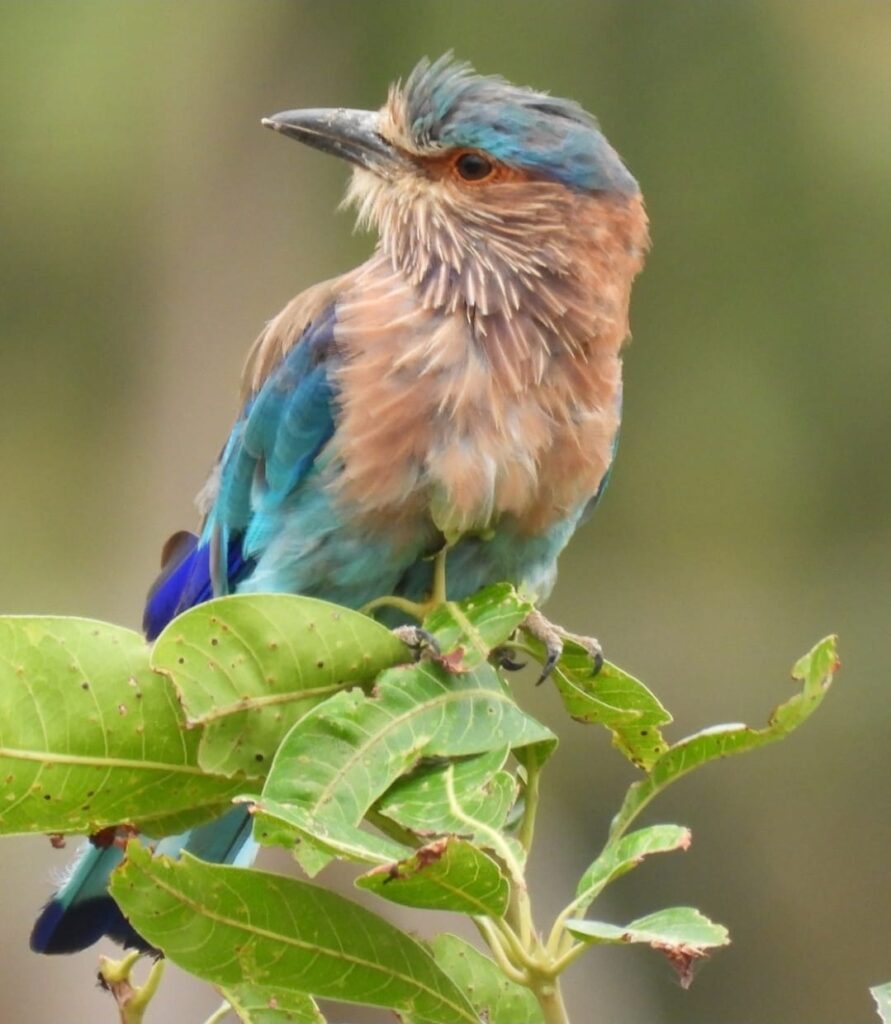
NEED FOR REGULAR MONITORING
The Indian Roller species is considered sacred due to its association with Lord Shiva, and is sometimes caught (though usually released) during festivals.
There is an urgent need for regular monitoring of this species across its range to more accurately derive the population trends in Karnataka and other states. Further, there is need to identify threats affecting this species and implement the conservation action to address their declining trends.
(PHOTO CREDIT: ALL PHOTOS BY MEERA BHARDWAJ IN EASTERN GHATS OF KARNATAKA & TAMIL NADU)
